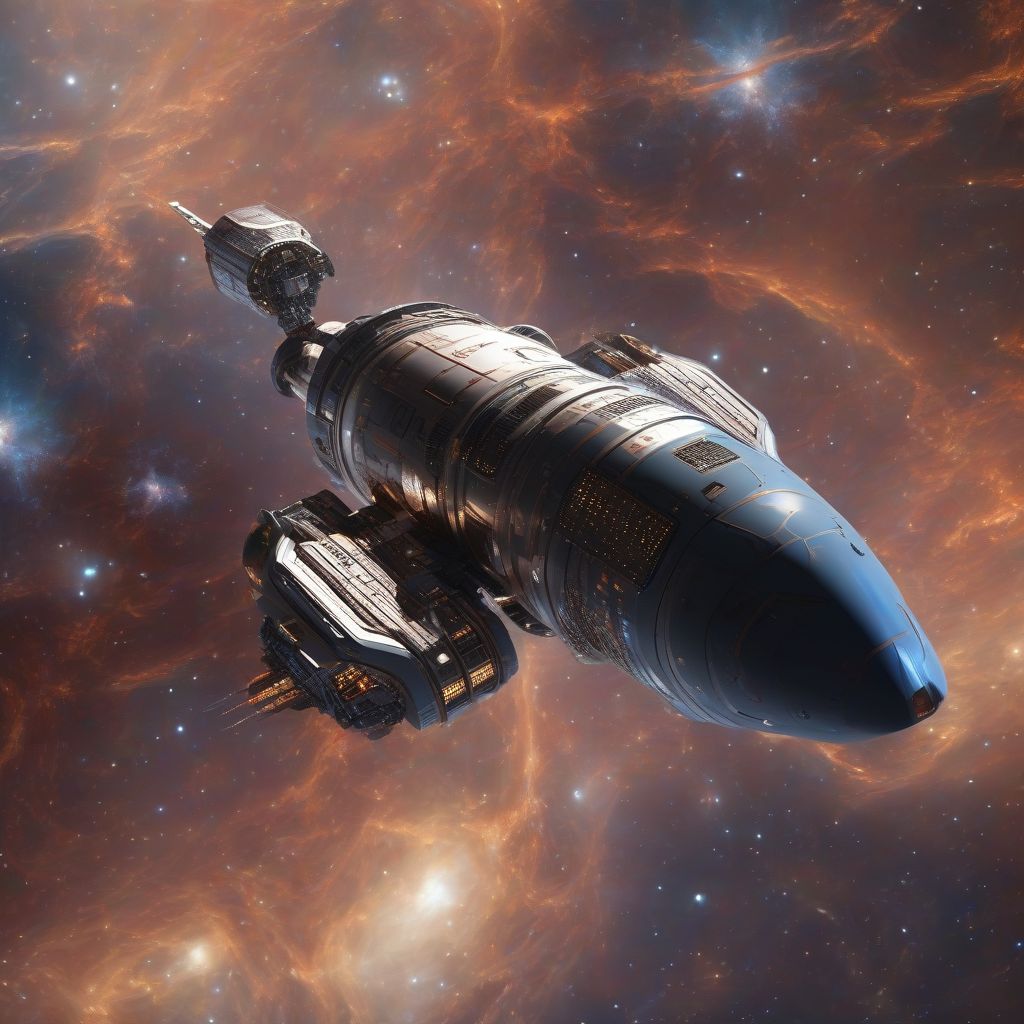Ever dreamt of venturing beyond the confines of Earth? Of exploring distant planets and unraveling the mysteries of the cosmos? For centuries, humanity has gazed at the stars, fueled by a desire to explore the vast expanse of space. The key to unlocking this dream lies in advancements in spacecraft propulsion, the technology that propels us across the cosmos. “The latest innovations in spacecraft propulsion technology” are not just incremental improvements, but represent a giant leap forward, paving the way for faster, more efficient, and further-reaching space travel than ever before.
Beyond Chemical Rockets: Redefining Space Travel
For decades, chemical rockets have been the workhorse of space travel, relying on the combustion of propellants to generate thrust. While reliable, they are inherently limited by their fuel efficiency. That’s why scientists are tirelessly exploring alternative propulsion systems, pushing the boundaries of what’s possible.
Electric Propulsion: Ion Thrusters and Beyond
Electric propulsion systems, such as ion thrusters, offer a significant leap in fuel efficiency. These systems use electricity to accelerate ions, creating thrust. Although the thrust generated is relatively low, it can be sustained for extended periods, allowing spacecraft to reach significantly higher speeds over time. NASA’s Dawn mission, which explored the asteroid Vesta and dwarf planet Ceres, demonstrated the remarkable capabilities of ion propulsion. “As Dr. Marc Rayman, the Dawn Chief Engineer and Mission Director stated,” ion propulsion allowed us to accomplish a mission that would have been impossible with conventional chemical propulsion.”
Solar Sails: Harnessing the Power of the Sun
Imagine a spacecraft propelled by the gentle pressure of sunlight. This is the principle behind solar sails, large, reflective sheets that capture photons from the sun to generate momentum. While the thrust is minimal, it’s continuous, offering a fuel-free means of propulsion. Projects like the Planetary Society’s LightSail 2 have demonstrated the potential of solar sails for interplanetary travel.
Nuclear Fusion Propulsion: The Holy Grail of Space Travel
Nuclear fusion, the process that powers the sun, holds immense potential for spacecraft propulsion. By fusing light atoms, enormous amounts of energy can be released, potentially enabling extremely high speeds and drastically reducing travel times to distant destinations. While still in the early stages of development, fusion propulsion could revolutionize deep space exploration. “Experts believe that controlled nuclear fusion could one day propel us to Mars in a matter of weeks, rather than months,” remarked a leading physicist in a recent interview.
Fuel Efficiency and the Future of Space Exploration
The pursuit of fuel efficiency isn’t just about reducing costs; it’s about expanding our reach. By developing more efficient propulsion systems, we can explore further into the solar system and beyond, reaching destinations previously out of reach.
Challenges and Opportunities
Despite the exciting advancements, significant challenges remain. Developing robust, reliable, and cost-effective propulsion systems for deep space missions requires overcoming complex engineering hurdles. However, the potential rewards are enormous. “The ongoing research and development in spacecraft propulsion,” according to a recent report by the National Academies of Sciences, Engineering, and Medicine, “are not only crucial for advancing space science but also hold significant implications for national security and economic growth.”
The Impact on Interplanetary Missions
Improved propulsion technology is key to enabling ambitious interplanetary missions. Faster travel times would reduce the exposure of astronauts to harmful radiation and the psychological challenges of long-duration spaceflight. Furthermore, efficient propulsion would allow for larger payloads, enabling more sophisticated scientific instruments and equipment to be carried on board.
 Latest Innovations in Spacecraft Propulsion
Latest Innovations in Spacecraft Propulsion
Beyond the Solar System: Interstellar Travel
The ultimate dream of space exploration is interstellar travel, venturing beyond our solar system to other star systems. While this remains a distant goal, advancements in propulsion technology are bringing it closer to reality.
Breakthrough Starshot: A Vision for the Future
Breakthrough Starshot, a research and engineering project, aims to send a fleet of tiny spacecraft to the Alpha Centauri star system, propelled by powerful laser beams. This ambitious project highlights the potential of innovative propulsion concepts to achieve what was once considered science fiction. “As Stephen Hawking, one of the original supporters of Breakthrough Starshot stated,” “earth is a wonderful place, but it might not last forever. Sooner or later, we must look to the stars.”
Conclusion
The latest innovations in spacecraft propulsion technology are revolutionizing our ability to explore the universe. From ion thrusters and solar sails to the potential of nuclear fusion, these advancements promise faster, more efficient, and further-reaching space travel. While significant challenges remain, the ongoing research and development in this field are paving the way for a future where humanity can venture deeper into the cosmos and unlock its many secrets. What are your thoughts on the future of space travel? Share your thoughts and ideas in the comments below and join the conversation!



